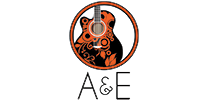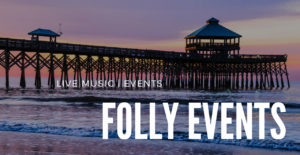Why you should visit Cuba now: a Folly local’s perspective
By Richard Brendel | Contributing Writer
I’m not a travel writer, but if I were, I would talk about the three reasons to hurry up and visit before the floodgates open and the rest of America shows up.
#1. Getting that Cuba stamp on your passport.
#2. All the old cars.
#3. The people!
Oh wait, there is a #4. The chocolate!
Traveling to Cuba is like getting to take a bite of forbidden fruit. As Americans, we have been told for the past 50 years that going to Cuba is a major no-no. Alas, as an entitled American, I don’t like being told what and where I can and can’t go. However, the threat of losing my travel privileges wasn’t worth the risk. But recently, the US government has been looking the other way regarding Americans traveling to Cuba. This November, I took the classic roundabout route from Cancun to Havana. On the short flight over, I was a little nervous of the unexpected. When it came to my turn at customs, the official just stamped away! Boom — it’s in the passport and it’s official.
My impetus for the trip was a photography workshop (along with my mom!) and I have to admit that my knowledge of the country’s past wasn’t thorough, besides what I remembered of Hemingway and his book Old Man & The Sea, the sinking of the USS Maine, Fidel, and of course, the scene in Captain Ron when they rescue the sailboat from the Cuban pirates. What I did know, however, was that there would be lots of vintage cars from the ’40s and ’50s.
As a photographer, old cars are one of my favorite things to shoot, and sure enough, in Cuba they did not disappoint. It was like stepping back in time or being on a movie set. The first night, I just sat on the stoop in front of where we were staying and watched old cars come flying down the hill. The next morning, I had a field day standing on the corner, shooting pictures of vintage Chevys, Fords, Oldsmobiles, Buicks, and Studebakers.
I would say over 80 percent of the cars in Cuba are pre-1960s. When we decided to travel outside of Havana, we hired a driver with a ’58 Ford Fairlane. Our driver let me drive! Then he let my mother drive! He was proud of his car—it had been in his family since before the start of the embargo. He told us in very broken English that they replaced the original motor with a Toyota motor. Basically, because of the U.S. embargo, most cars are like the Johnny Cash song “ One Piece at A Time.”
I worry about what will happen when they open up Cuba to the U.S. car manufacturers and car collectors. If Cuba loses their old cars, then they will lose much of the mystic element that sets them apart from other Latin American countries. It was bad enough having crappy Japanese cars driving through the background of my pictures!
I have traveled all over Central and South America, and have met all sorts of people and experienced many different Latin cultures. With that diverse backdrop for perspective, I was blown away at how awesome the people in Cuba are. They were so excited to meet Americans and were thankful that we had chosen to come to visit. When they figured out I was from the U.S. they ALL ask if I was from Miami. As much fun as I had walking around taking pictures of the cars, I had just as much fun meeting and taking pictures of the people. Cubans are survivors — they’re happy and make the most of what they have. And it’s true — they love baseball!
Now, the chocolate. As a chocoholic, my first request at dinner was some kind of chocolate dessert. While they didn’t have cake, they did have ice cream. This is when I learned about government ice cream. Yes, the Cuban government controls the supply of ice cream. Ask me what’s wrong with Socialism!
Over the course of visiting several restaurants, I got to have both types — government-controlled and free market ice cream, which has only been around for a few years. Of course, the free market ice cream tasted so much better. However, when it comes to real chocolate — you know, the melty, delicious smudge-on-your-face-and-hands chocolate — then you have to visit the chocolate factory in the heart of old Havana. First, they start you off with a cold tall glass of chocolate milk. Then you can pick from a selection of chocolate bears, fish, guitars, etc … I’ve been all over the world and I’ve never had chocolate this good!
What’s pleasantly noticeable was the lack of commercialism once you get outside of Havana. A few years ago, the government began encouraging the people of Cuba to start their own businesses. The Cubans took this as a challenge, and small businesses have started to pop up everywhere. It’s interesting to try and figure out what businesses are government and which ones are businesses of the people. It pains me to think that the McDonalds, Burger King and their ilk are frothing at the mouth to end these budding entrepreneurs that are rising up amongst the Cuban people.
In closing, a few notes: Cuba’s infrastructure is not set up to handle a mass influx of people. If you like to travel in style, then find a hotel and hire a driver with a classic car. If you’re on a budget, you will have to stay in “case particulars.” Basically, these are AirBnB-type rentals without the benefit of the internet to book and leave reviews. You can take beat-up vintage cabs around the city and take the bus or do ride shares outside of Havana. The more Spanish you speak, the more exciting things you will get to do. The bottom line is … go to Cuba! Get that elusive passport stamp, go back in time with all the old cars, meet the people and let the amazing chocolate melt on your fingers and in your heart!
Richard Brendel is a Folly Beach resident, owner of Flipper Finders, and world traveler. To view more of his photographs visit www.pirateislandphotography.com.













